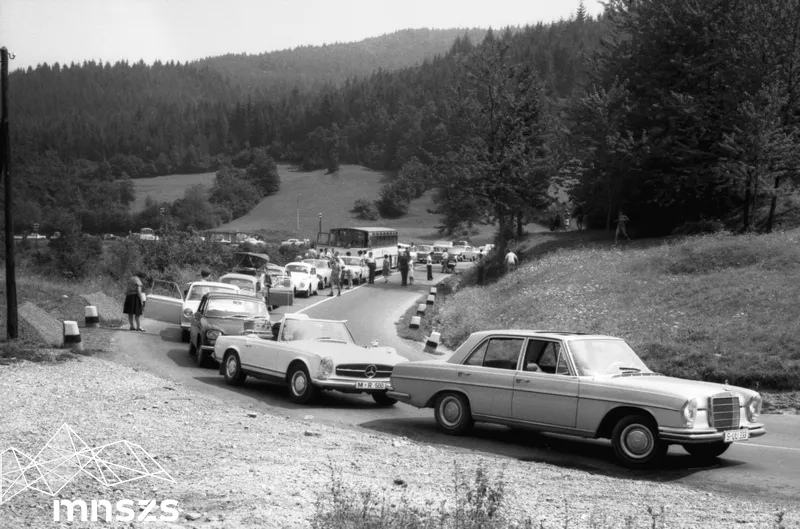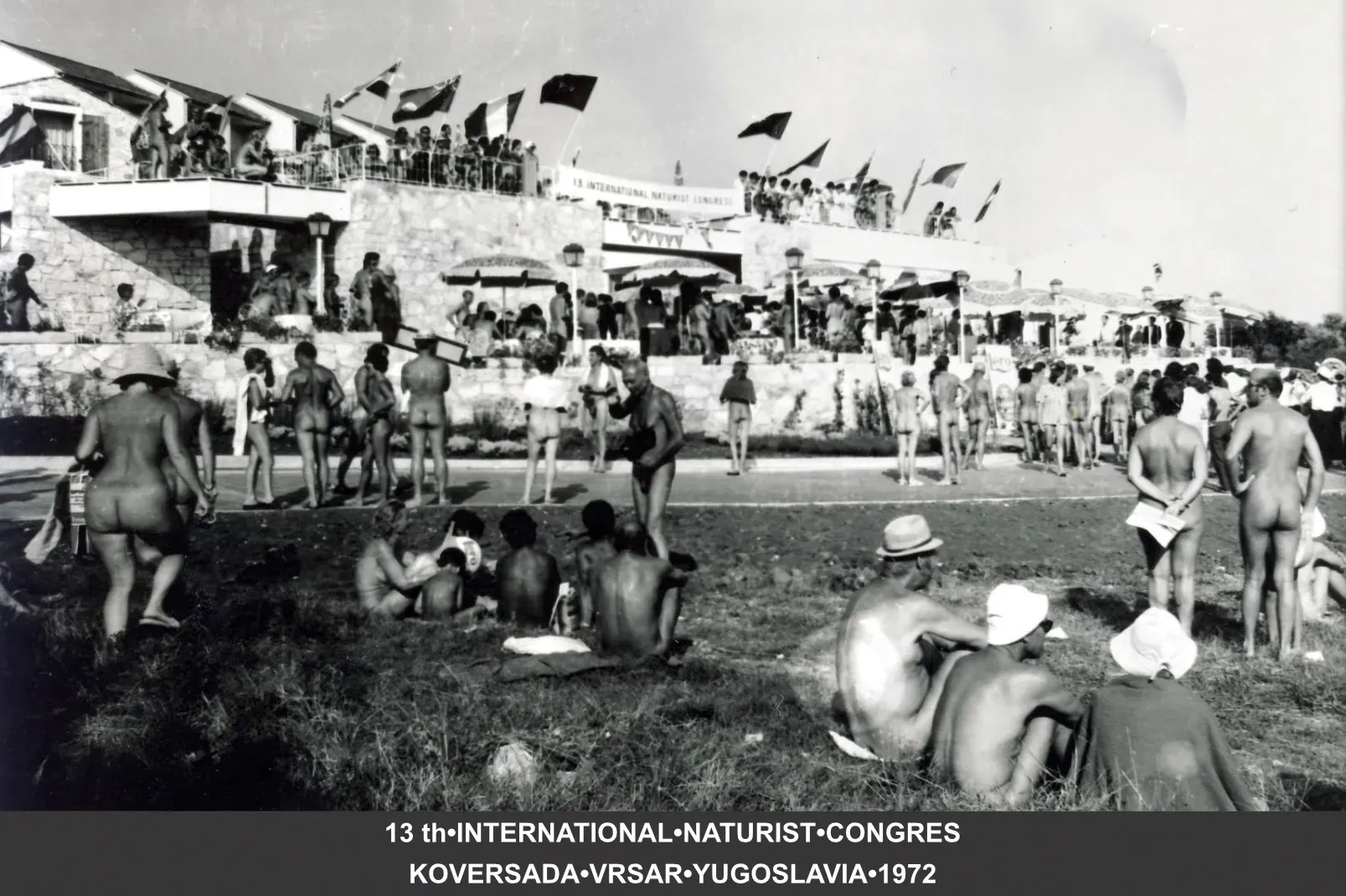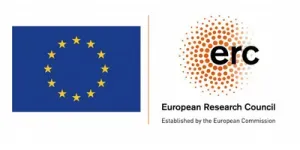
Places
During the summer months, motorcades from various European countries filled the regional roads to and from the sea, as shown in this photo taken on the road between Planina and Postojna in 1965. Growing international tourism prompted thoughts of creating a highway network.



